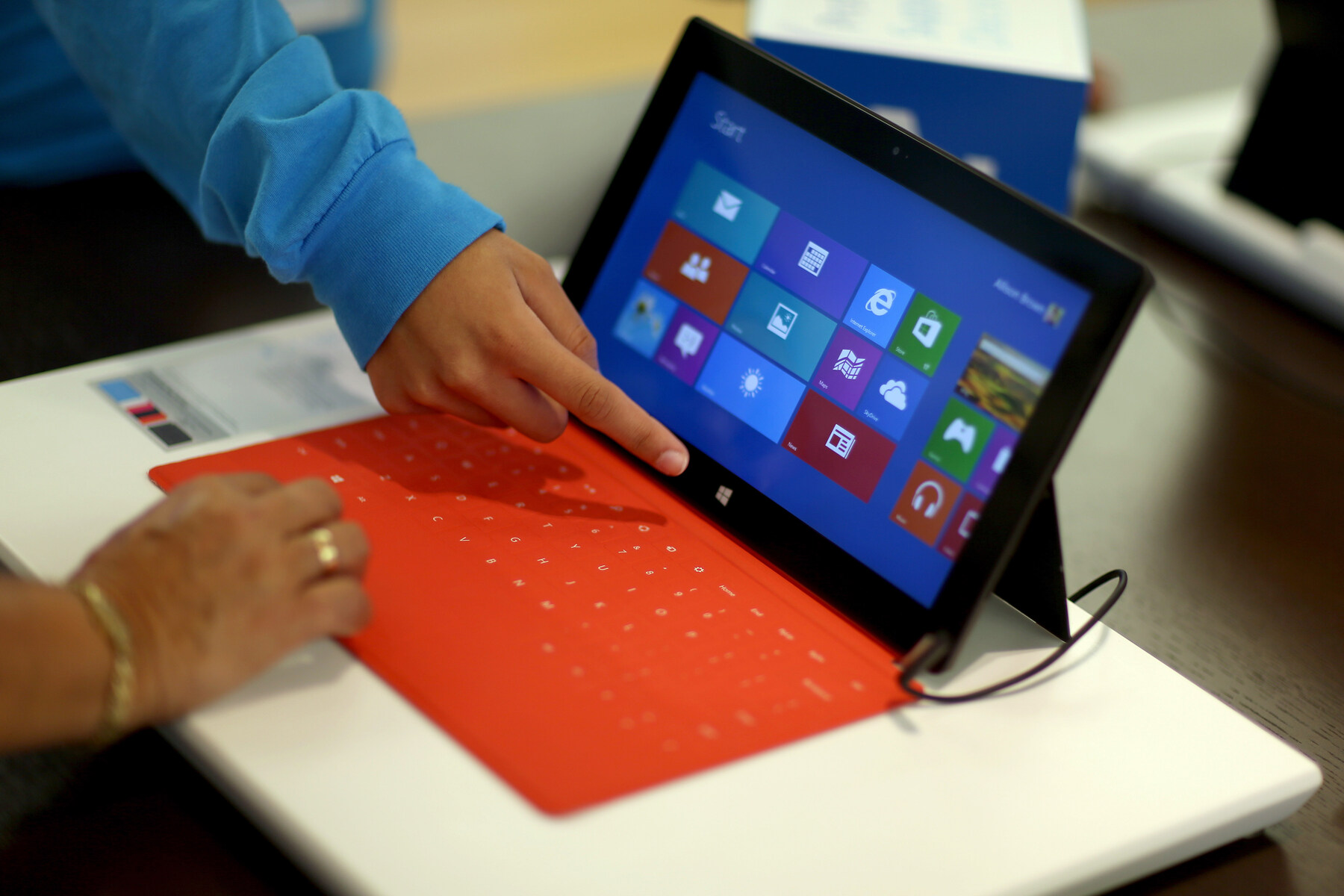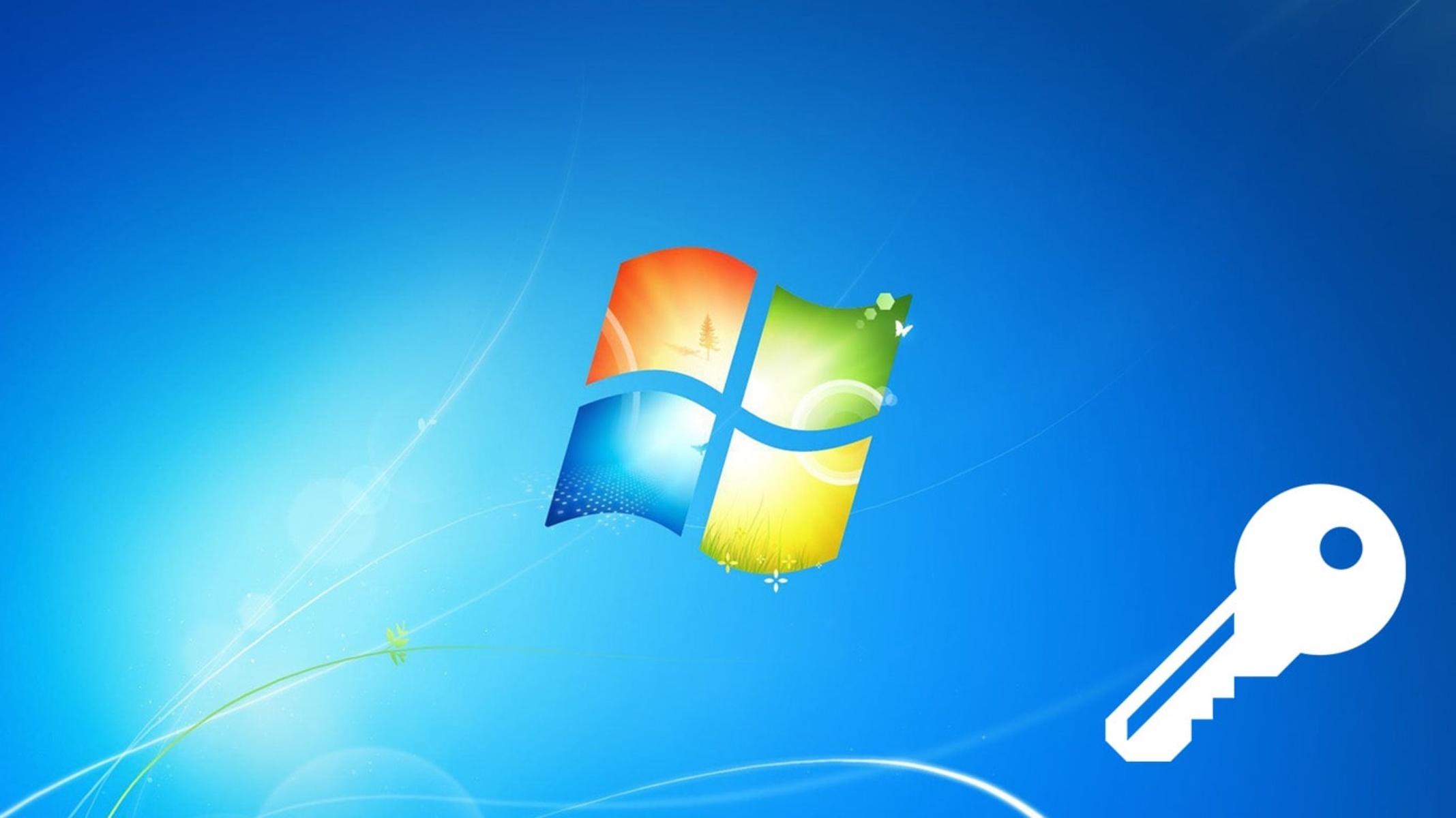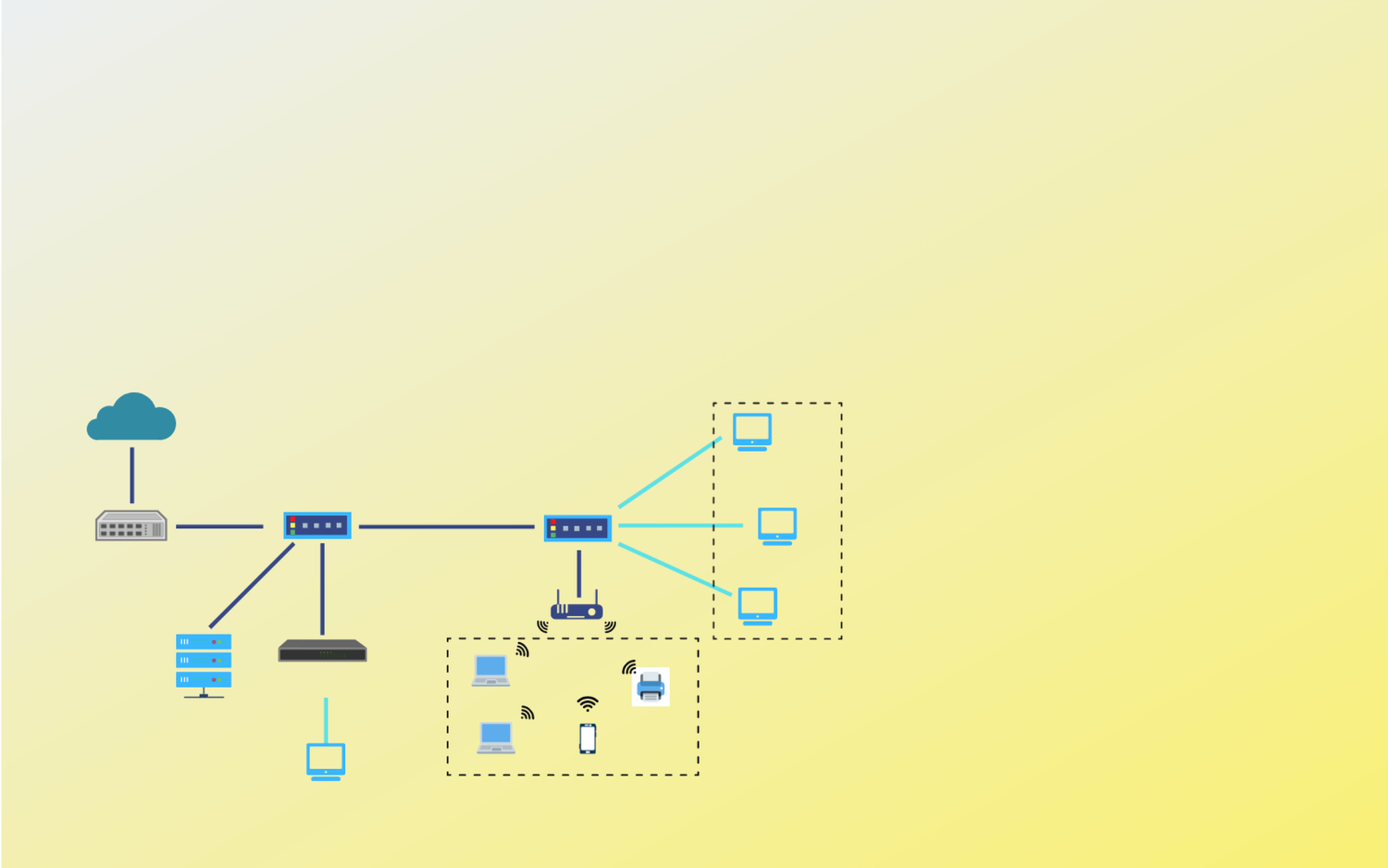Introduction
Welcome to our guide on how to find a Workstation Id. In today’s modern world, where remote work and flexible schedules have become the new norm, identifying and managing Workstation Ids is crucial for businesses and IT departments. A Workstation Id is a unique identifier assigned to a specific computer or device within a network.
Whether you’re a system administrator, an IT professional, or simply curious about the inner workings of your computer, understanding how to locate the Workstation Id can provide valuable insights and facilitate troubleshooting processes.
In this article, we will explore various methods to find the Workstation Id on different operating systems. From using command prompt commands to checking the registry editor, we’ve got you covered!
Please note that the methods discussed here are applicable to Windows-based systems. While other operating systems may have different approaches, the concepts behind Workstation Ids remain relatively consistent across platforms.
Now, let’s dive into the world of Workstation Ids and discover the intriguing ways to identify them!
What is a Workstation Id?
A Workstation Id, also known as a Computer Id or Machine Id, is a unique identifier assigned to a computer or device within a network infrastructure. It is used to distinguish one workstation from another and enables administrators to manage and track individual devices.
The Workstation Id is typically a combination of alphanumeric characters that is automatically generated by the operating system or network software. This identifier remains constant for a specific workstation, regardless of network changes or system restarts.
Workstation Ids are essential in various network-related tasks, such as user authentication, remote access control, system monitoring, and asset management. By associating a specific identifier with each workstation, IT professionals can easily identify and troubleshoot network issues, enforce security policies, and deploy software updates and patches efficiently.
Furthermore, Workstation Ids contribute to network security by preventing unauthorized access to restricted resources. Many access control mechanisms, such as firewalls and network gateways, utilize Workstation Ids to determine the level of access granted to individual devices.
It’s important to note that Workstation Ids are unique within a specific network environment but may not be globally unique. In other words, two devices can have the same Workstation Id as long as they exist in separate networks.
Workstation Ids are also different from other commonly known identifiers, such as IP addresses or computer names. While IP addresses are essential for network connectivity, they can change dynamically or be shared between multiple devices. On the other hand, computer names are user-defined and can be modified, making them less reliable as unique identifiers.
Overall, the Workstation Id plays a crucial role in network management and security. By understanding what a Workstation Id is and how it functions, you can gain better control and visibility over your network infrastructure.
Why is a Workstation Id important?
A Workstation Id is an essential component of network management and security. Here are several key reasons why a Workstation Id is important:
1. Network Security: Workstation Ids play a vital role in maintaining network security. By having a unique identifier for each workstation, network administrators can effectively control access to resources and monitor network activity. With Workstation Ids, administrators can easily identify and track specific devices, ensuring that only authorized workstations can connect to the network and access sensitive data.
2. Asset Management: Workstation Ids enable efficient asset management within an organization. By associating unique identifiers with individual workstations, administrators can keep track of hardware and software inventory. This information is useful for planning upgrades, managing licenses, and identifying outdated or vulnerable systems that require attention.
3. User Support and Troubleshooting: Workstation Ids simplify user support and troubleshooting processes. When users report issues or require technical assistance, knowing their Workstation Ids allows IT support teams to quickly pinpoint the specific device experiencing problems. This saves time, increases productivity, and facilitates faster resolution of technical issues.
4. Remote Access Control: Workstation Ids are especially crucial in remote work environments. With the rise of telecommuting, ensuring secure remote access to the organization’s network is essential. Workstation Ids help authenticate and authorize remote user connections, allowing businesses to maintain a secure and controlled remote work environment.
5. System Monitoring: Workstation Ids provide valuable insights into system performance and behavior. By monitoring the activities of individual workstations, administrators can proactively identify and address performance issues, potential security threats, and anomalies in network behavior. Workstation Ids facilitate effective monitoring and mitigation strategies to keep the network running smoothly.
6. Compliance and Audit: In regulated industries, such as finance or healthcare, maintaining compliance with industry standards and regulations is crucial. Workstation Ids contribute to compliance efforts by ensuring accountability and traceability of system activities. They assist in performing audits, generating reports, and demonstrating adherence to security and data protection requirements.
By understanding the importance of a Workstation Id, organizations can leverage this unique identifier to enhance network security, streamline operations, and ensure a productive and reliable computing environment.
Methods to find Workstation Id
There are several methods you can use to find the Workstation Id on your computer. We will explore various techniques that are compatible with Windows-based operating systems.
1. Using Command Prompt: One straightforward method to find the Workstation Id is by using the Command Prompt utility. Simply open the Command Prompt, type “hostname” without the quotes, and press Enter. The returned value will be your Workstation Id.
2. Checking the Registry Editor: Another way to find the Workstation Id is by accessing the Registry Editor. Open the Start Menu, type “regedit” without the quotes, and press Enter. In the Registry Editor, navigate to the following path: HKEY_LOCAL_MACHINE\SYSTEM\CurrentControlSet\Control\ComputerName\ComputerName. The Workstation Id will be listed under the “ComputerName” value.
3. Using PowerShell: PowerShell provides a powerful and flexible method to find the Workstation Id. Open PowerShell by typing “PowerShell” in the Start Menu search field and selecting the PowerShell application. Then, enter the following command: “$env:COMPUTERNAME” without the quotes. The Workstation Id will be displayed as the output.
4. Checking System Information: The System Information utility in Windows also provides details about your Workstation Id. To access System Information, press the Windows Key + R to open the Run dialog box, then type “msinfo32” without the quotes and press Enter. In the System Information window, look for the “System Model” or “Machine Name” field to find your Workstation Id.
5. Using System Management BIOS (SMBIOS): SMBIOS, commonly referred to as the System BIOS, can provide the Workstation Id as well. To access this information, open the Command Prompt and type “wmic csproduct get UUID” without the quotes. The UUID value displayed is equivalent to the Workstation Id.
These methods should help you uncover the Workstation Id for your computer. Keep in mind that the specific steps or locations may vary slightly depending on your Windows operating system version. By utilizing these techniques, you can retrieve your Workstation Id and utilize it for various network management and troubleshooting tasks.
Method 1: Using Command Prompt
One of the simplest and quickest methods to find the Workstation Id is by utilizing the Command Prompt utility. Here’s how you can do it:
Step 1: Open the Command Prompt by pressing the Windows key and typing “Command Prompt” or “cmd” in the search bar. Click on the Command Prompt application to open it.
Step 2: In the Command Prompt window, type “hostname” without the quotes and press Enter.
Step 3: The Command Prompt will display the Workstation Id as the output. It is usually a single word or a combination of letters, numbers, and special characters.
By following these simple steps, you can quickly retrieve the Workstation Id of your computer using the Command Prompt. This method is especially useful when you need the identifier in a command-line environment.
It’s important to note that the Workstation Id obtained through the Command Prompt corresponds to the hostname of the device. This hostname is often used to identify the computer within a network, making it a reliable method to find the Workstation Id.
Now that you know how to use the Command Prompt to find the Workstation Id, you can easily obtain this unique identifier for your computer and utilize it for various network management and troubleshooting purposes.
Method 2: Checking the Registry Editor
Another method to find the Workstation Id on your Windows computer is by accessing the Registry Editor. Follow these steps to locate the Workstation Id:
Step 1: Open the Start menu and type “regedit” without the quotes in the search bar. Press Enter to launch the Registry Editor.
Step 2: In the Registry Editor window, navigate to the following path: HKEY_LOCAL_MACHINE\SYSTEM\CurrentControlSet\Control\ComputerName\ComputerName. You can do this by expanding the different folders on the left-hand side of the Registry Editor window.
Step 3: On the right-hand side of the Registry Editor, look for the entry named “ComputerName” or “ComputerName” with a Type of “REG_SZ”. The value associated with this entry will be your Workstation Id.
It’s important to note that the Workstation Id may be displayed in different formats, such as a combination of letters, numbers, or special characters. The format may vary depending on the specific configuration of your computer.
By accessing the Registry Editor and locating the appropriate entry, you can easily find the Workstation Id associated with your computer. This method provides a reliable and system-level approach to retrieve the identifier.
Remember to exercise caution when making changes or accessing the Registry Editor. Modifying or deleting registry entries without proper knowledge can lead to system instability or other unforeseen issues. Always make sure to back up your registry or consult with a professional if you are unsure about any steps.
Now that you are familiar with this method, you can confidently use the Registry Editor to find the Workstation Id on your Windows computer. This unique identifier can be invaluable for network management, troubleshooting, and various other tasks.
Method 3: Using PowerShell
PowerShell provides a powerful and flexible method to find the Workstation Id on your Windows computer. Follow these steps to retrieve the identifier using PowerShell:
Step 1: Press the Windows key and type “PowerShell” in the search bar. Click on the Windows PowerShell application to open it.
Step 2: In the PowerShell window, type the following command without the quotes: “$env:COMPUTERNAME” and press Enter.
Step 3: PowerShell will display the Workstation Id as the output. This identifier is typically a combination of letters, numbers, or special characters.
PowerShell provides a convenient and efficient way to retrieve the Workstation Id, as it offers powerful scripting capabilities and direct access to system information.
By utilizing PowerShell, you can easily automate the process of finding the Workstation Id or incorporate it into your scripts for network management, configuration, or troubleshooting purposes.
It’s essential to note that PowerShell can be a robust tool, and incorrect usage may have unintended consequences. Familiarize yourself with PowerShell commands and syntax to ensure accurate results and avoid unintentional modifications to your system.
With PowerShell at your disposal, you have a convenient and reliable method to find the Workstation Id on your Windows computer. This identifier can be instrumental in various network-related tasks and assist in maintaining a well-managed and secure computing environment.
Method 4: Checking System Information
If you’re looking for a straightforward method to find the Workstation Id on your Windows computer, checking the System Information utility can provide the necessary details. Follow these steps:
Step 1: Press the Windows key + R to open the Run dialog box.
Step 2: Type “msinfo32” without the quotes into the Run dialog box and press Enter. This will open the System Information window.
Step 3: In the System Information window, look for the “System Model” or “Machine Name” field. This field displays your Workstation Id, which is typically a combination of alphanumeric characters.
The System Information utility provides a comprehensive overview of your computer’s hardware and software configuration, making it a reliable source for finding the Workstation Id.
It’s important to note that the location of the Workstation Id within the System Information window may vary slightly depending on your Windows operating system version. However, it is commonly found under the “System Model” or “Machine Name” section.
By checking the System Information, you can quickly locate your Workstation Id without the need for third-party tools or additional commands.
However, keep in mind that the System Information utility provides a wealth of information about your computer, and exploring other sections can be useful for diagnosing hardware issues or identifying driver versions.
With the System Information utility, you have a user-friendly and readily accessible method to find the Workstation Id on your Windows computer. Utilize this information for network management, troubleshooting, or any other task that requires identifying your workstation within the network.
Method 5: Using System Management BIOS (SMBIOS)
If you’re looking for an alternative method to find the Workstation Id on your Windows computer, you can utilize the System Management BIOS (SMBIOS) information. Follow these steps:
Step 1: Open the Command Prompt by pressing the Windows key and typing “Command Prompt” or “cmd” in the search bar. Click on the Command Prompt application to open it.
Step 2: In the Command Prompt window, type the following command without the quotes: “wmic csproduct get UUID” and press Enter.
Step 3: The Command Prompt will display the UUID (Universally Unique Identifier) as the output. In many cases, the UUID serves as the Workstation Id.
SMBIOS, often referred to as the System BIOS, provides information about your computer’s hardware components, including the UUID or Workstation Id.
The UUID is a unique identifier assigned to each computer and contains alphanumeric characters. It serves as a reliable and consistent means of identifying your workstation within the network.
By using the Command Prompt and the “wmic” command, you can quickly retrieve the UUID and utilize it as your Workstation Id.
It’s worth noting that the “wmic” command provides an extensive list of system information, and you can explore other options to extract more details about your hardware and software configuration.
With the System Management BIOS and the “wmic” command, you have an additional method to find the Workstation Id on your Windows computer. Utilize this information for network management, troubleshooting, or any other task that requires identifying your workstation within the network.
Conclusion
Finding the Workstation Id on your Windows computer is essential for network management, troubleshooting, and ensuring a secure computing environment. By understanding the various methods available, you can easily locate this unique identifier and utilize it for a range of purposes.
In this guide, we explored five different methods to find the Workstation Id:
- Using Command Prompt: By typing “hostname” in the Command Prompt, you can quickly retrieve the Workstation Id.
- Checking the Registry Editor: Through the Registry Editor, you can locate the Workstation Id under the “ComputerName” value.
- Using PowerShell: By running the command “$env:COMPUTERNAME” in PowerShell, you can retrieve the Workstation Id.
- Checking System Information: The System Information utility displays the Workstation Id under the “System Model” or “Machine Name” section.
- Using System Management BIOS (SMBIOS): The “wmic csproduct get UUID” command in the Command Prompt provides access to the UUID, which can serve as the Workstation Id.
Each method offers its own benefits and may be more suitable based on your preferences or the specific requirements of your task.
Remember, the Workstation Id is a unique identifier that helps with network security, asset management, user support, remote access control, system monitoring, and compliance efforts in regulated industries.
As you explore these methods, be sure to refer to the specific steps and commands provided to retrieve your Workstation Id accurately. Moreover, exercise caution and seek professional guidance when working with advanced tools like the Registry Editor or PowerShell.
By utilizing these methods to find the Workstation Id, you can effectively manage and troubleshoot your network, enhance security measures, and ensure seamless operations within your Windows-based system.

























